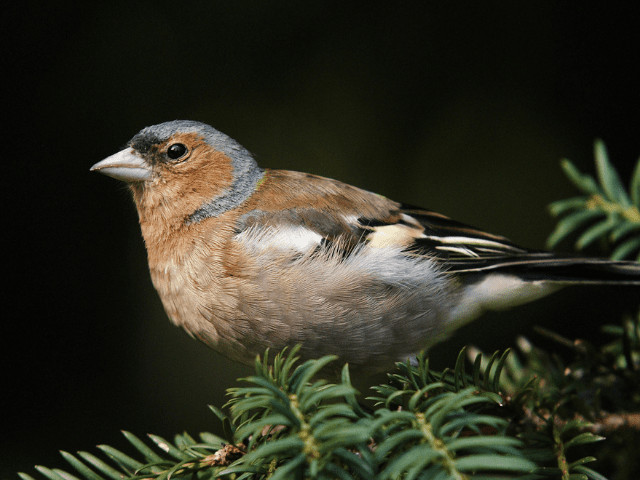If you're new to bird watching in Texas, finches are a great way to start because they are quite widespread.
On top of that...
They are very social (and noisy) birds that move in huge flocks, so you can easily spot them in the wilderness. Some even visit backyards for food, which is why finches are collectively known as a "backyard bird."
Currently, there are eight kinds of finches in Texas, so we prepared a guide so you can differentiate them when you go birding.
American Goldfinch (Spinus tristis)
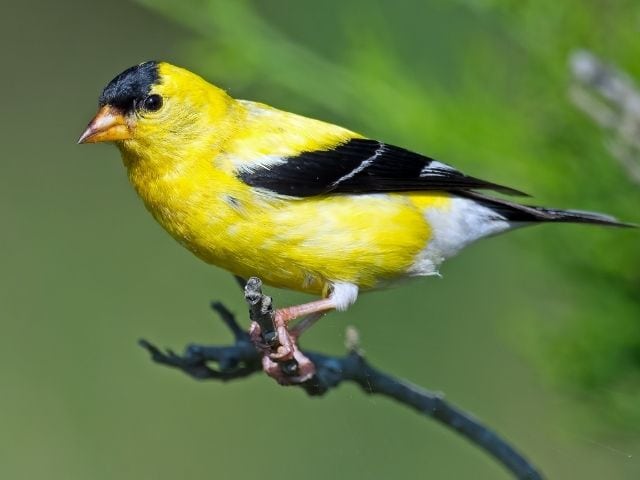
As you may have guessed from the name, the American Goldfinch has a yellow body.
The male has a black cap and white rump, while its wings and tail feathers are black with flashy white stripes. Its shoulder bars are also bright yellow.
On the other hand, the female has a duller olive body. It shares the same patterns as the male, except it lacks the black cap.
During winter, both male and female species become duller, turning into a pale yellow-brown color.
Cassin's Finch (Haemorhous cassinii)
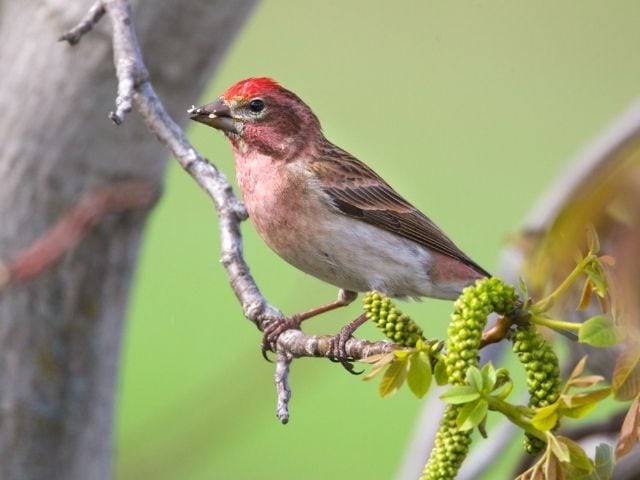
The Cassin's Finch is known for its ruby-colored crown, throat, and rump. Its belly is white, while the wings and tail plumage is brown.
On the other hand, the female doesn't have the red color. Instead, its face and body are white with brown streaks that extend to its belly. The wings and tail are the same as the male.
If you want to distinguish the Cassin's Finch, observe its head as it's the only one with the spiked crown among the three.
Although this species is uncommon in Texas, you can still find it in the state's western regions. It's usually present most of the year, only leaving during its breeding season.
Common Redpoll (Acanthis flammea)

You can easily recognize a Common Redpoll by looking at the bright red spot on its head and its subtle red chest.
Its body is white with some brown streaks, while its wings and tail are brown with some white streaks. It also has a black chin.
The female bird shares the same characteristics as the male, except it doesn't have a subtle red chest.
This is another uncommon species in Texas as it's only present during winter in the northernmost parts of the states.
House Finch (Haemorhous mexicanus)
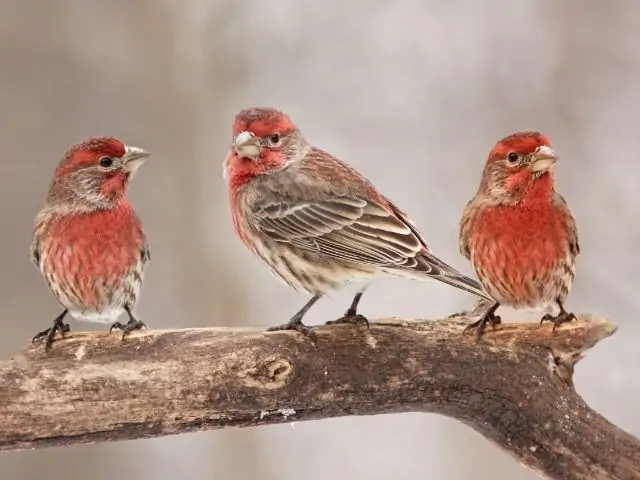
The male House Finch has a cherry-colored head, throat, and rump. Its belly is white with brown streaks, while its wings and tail are brown.
Meanwhile, the female House Finch shares the same pattern as the male, except the red parts are replaced with brown.
Even if you're not birding...
You may casually spot flocks of House Finches as they're widespread throughout the whole year, especially in western Texas.
Lesser Goldfinch (Spinus psaltria)
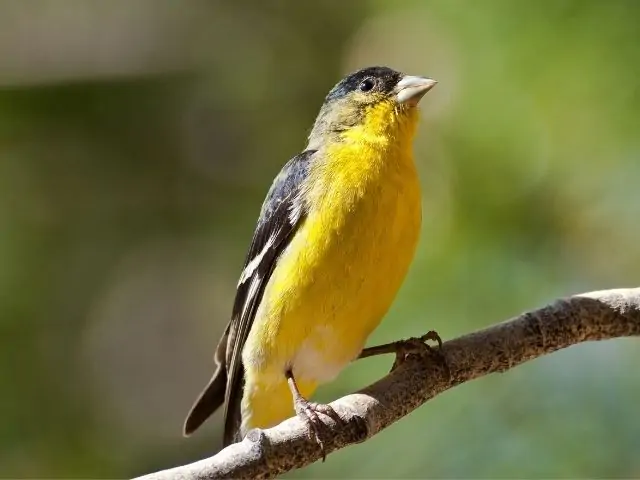
Like the previous American Goldfinch, the Lesser Goldfinch has a bright yellow belly and a black cap. The wings and tail are also black with white stripes.
However, its back and rump are brown (sometimes green). The shoulder bars are also this color.
For the female bird, the black cap is absent, while the back, rump, shoulder bars, and belly are all brown or green.
This species is a year-round resident of Texas. However, they're typically concentrated in the central parts of the state during the breeding season.
Pine Siskin (Spinus pinus)
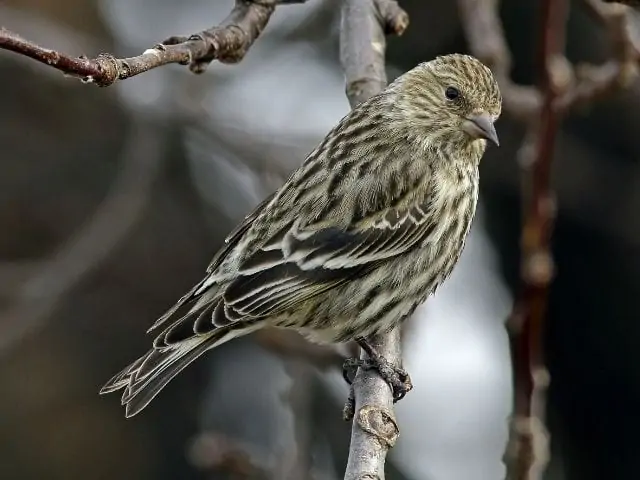
The Pine Siskin is another finch species you can easily recognize, as its wings and tail are black with bright yellow stripes. The male bird has multiple stripes, while the female only has one.
For the rest of its body, the head and back are brown while the belly is white with brown streaks.
Purple Finch (Haemorhous purpureus)
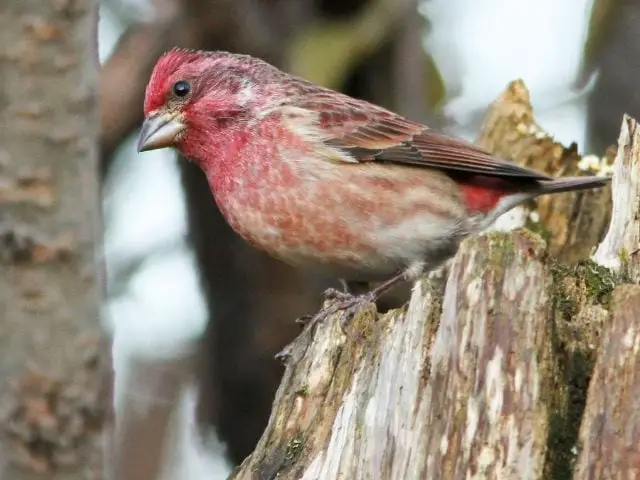
The Purple Finch and House Finch almost share the same patterns. You can recognize this species by its deeper raspberry color and fewer belly stripes than the House Finch.
However, the females of both birds look almost identical. In this case, you need to take a closer look at their body shape and size.
Red Crossbill (Loxia curvirostra)
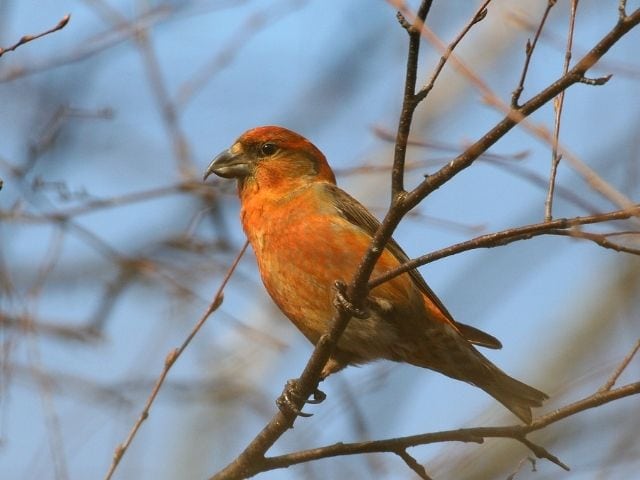
If you see a small bird with an entirely red body paired with black wings and tail, you've found yourself a Red Crossbill.
Red Crossbills are typically found outside their breeding season, specifically in northern and western Texas. Consider yourself lucky if one visits your backyard, as this species is hard to attract!
Fun Fact: Kids are easily and readily attracted to small birds. Make their engagement with these avian cuties by providing your kids with binoculars for that special up-close moment with them!
Frequently Asked Questions
How Can I Attract Finches?
Finches are known to eat seeds and sometimes small insects. During winter, when food is scarce, they tend to visit bird feeders in backyards. The best way to attract finches is to load up your feeder with seeds -- black sunflower seed, pine seed, nyjer seed, and others you might think would make them drop by.
However, keep in mind that each species has its own favorite food. If you want to attract a specific finch, then use a specific seed.
Know more about how to attract finches to your yard by watching the following video:
Can I Keep Finches As Pets?
Yes, absolutely! Finches make great pets because of their color, pleasant sounds, and socialization within their flock. However, it would help if you were prepared because finches are active birds that require toys, perches, and a large cage for exercise. They also don't do well alone, so it's best to keep finches in pairs or small groups.
They also don't like getting handled, though they are unlikely to bite. If you want a bird that you can play with every day, finches aren't for you.
What Are Other Backyard Birds In Texas?
Apart from finches, here are some other species that can visit your backyard in Texas:
- Blue Jay
- Downy Woodpecker
- Golden Cheeked Warbler
- House Sparrow
- Mourning Dove
- Northern Cardinal
- Painted Bunting
- White Winged Dove
Closing Remarks
The state parks in Texas are great to visit for outdoor recreation and enjoy the wilderness and scenery.
Among these, the Lost Maples State Natural Area is the best spot to look for wild finches! So, get your birding gear ready, and enjoy the beautiful sounds and colors that finches have to offer.
If outdoor recreation isn't your thing, you can also attract them to your backyard with seed feeders.
Nevertheless, we hope this article helped you identify the eight Texas finches.

